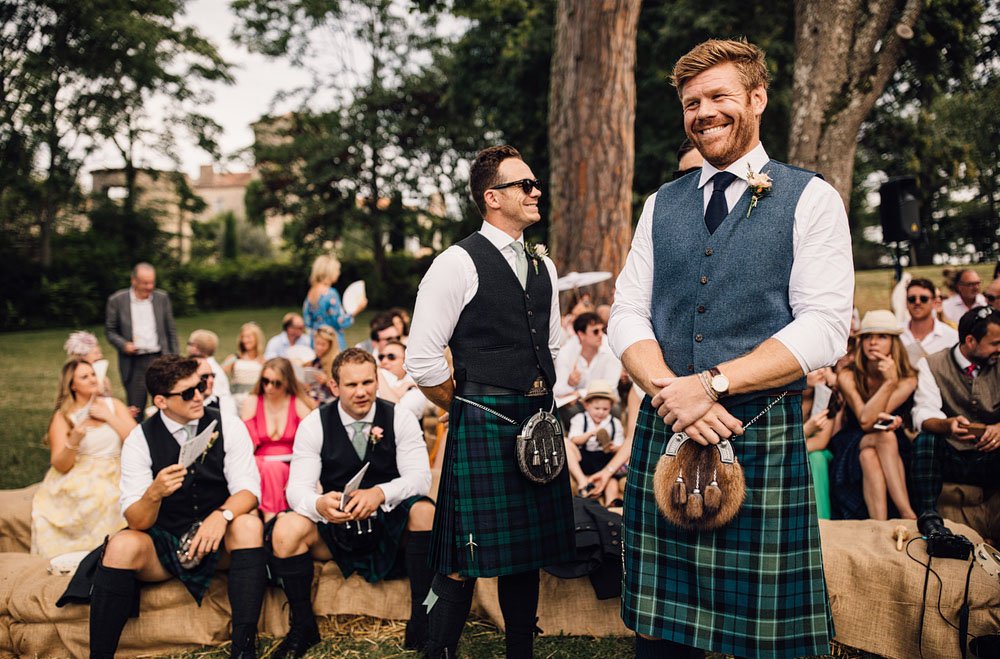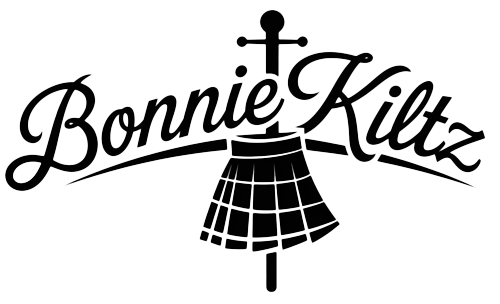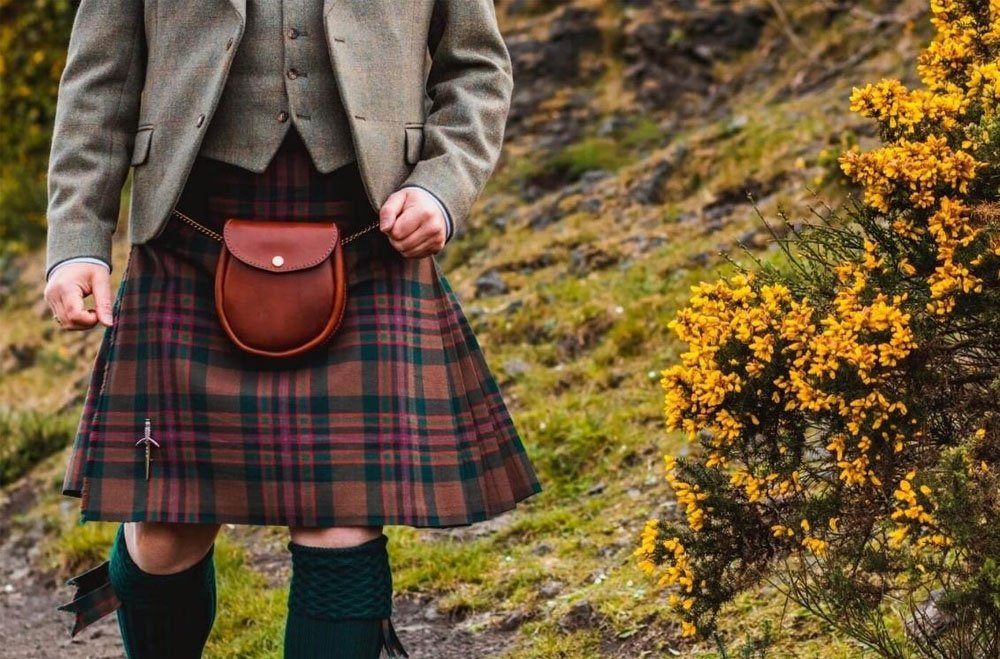Kilts are more than just a piece of clothing; they are a symbol of Scottish heritage and culture, deeply rooted in history. Traditionally worn by men, kilts have evolved over the years, branching into various styles that cater to modern sensibilities and practical needs. In this blog post, we will delve into the two primary types of kilts: Traditional Kilts and Contemporary (or Utility) Kilts. We’ll explore their history, key features, uses, and how they differ from each other.
A Brief History of Kilts
The kilt has its origins in the Scottish Highlands and can be traced back to the 16th century. Initially, the kilt was a full-length garment made from woolen fabric, known as the “great kilt” or “feileadh mòr.” This early version of the kilt was a versatile piece of clothing that could be worn in various ways, providing warmth and protection in the rugged Highland landscape.
The modern kilt, which is often associated with formal events and ceremonies, evolved from these early designs. By the 19th century, the kilt became a symbol of Scottish identity, particularly among the Scottish diaspora. Today, kilts are worn by people all over the world, not just in Scotland, and have diversified into two main categories: Traditional and Contemporary kilts.

1. Traditional Kilts
a. Overview of Traditional Kilts
Traditional kilts are quintessentially Scottish, embodying the rich cultural heritage and historical significance of the garment. These kilts are typically made from heavy woolen tartan fabric, which is woven in distinct patterns and colors that represent different clans and families. Each tartan tells a story, making the choice of fabric a personal one for many kilt wearers.
b. Key Features
Material and Construction
Traditional kilts are made from high-quality wool, which is durable and provides warmth. The fabric is often treated to ensure it drapes beautifully and retains its shape. The classic kilt features pleats at the back, which allow for ease of movement while maintaining a structured appearance in the front. The length typically falls around the knee, providing a timeless and dignified look.
Design Elements
The design of traditional kilts includes several distinctive elements:
- Pleats: Pleats are a defining characteristic of traditional kilts. They are usually sewn down to the waistband and open at the back, allowing for freedom of movement.
- Belt and Buckle: Traditional kilts often feature a belt and buckle at the waist, providing a secure fit and adding to the overall aesthetic.
- Sporran: A sporran is a pouch worn at the front of the kilt, serving both decorative and functional purposes. It is typically made from leather or fur and is used to carry personal items.
- Kilt Pin: A kilt pin is often worn on the front apron of the kilt, adding weight to the fabric and preventing it from blowing in the wind.
c. Common Uses
Traditional kilts are predominantly worn on formal occasions, such as weddings, ceilidhs (Scottish social gatherings), Highland games, and other cultural events. They are also worn by members of the Scottish military and pipe bands, showcasing the deep-rooted connection between the kilt and Scottish heritage. The traditional kilt is a statement of pride, representing one’s ancestry and connection to Scottish culture.

2. Contemporary/Utility Kilts
a. Overview of Contemporary Kilts
Contemporary kilts, often referred to as utility kilts, emerged as a modern alternative to the traditional style. While they still retain the essence of the kilt, contemporary kilts are designed with a focus on comfort, practicality, and versatility. They have gained popularity among individuals looking for a stylish yet functional garment.
b. Key Features
Material and Construction
Unlike traditional kilts, contemporary kilts are made from a variety of materials, including cotton, denim, and even leather. These materials provide increased comfort, breathability, and durability, making them suitable for everyday wear. The construction often incorporates modern tailoring techniques, resulting in a more relaxed fit.
Design Elements
The design of contemporary kilts includes several practical features:
- Pockets: Utility kilts are known for their numerous pockets, providing ample storage space for personal items. These pockets are often placed strategically to maintain the kilt’s aesthetic while being functional.
- Adjustable Waistbands: Many contemporary kilts come with adjustable waistbands, allowing for a customizable fit. This feature enhances comfort, especially during physical activities.
- Variety of Styles: Contemporary kilts come in various styles, colors, and patterns, allowing wearers to express their individuality. From casual designs to more rugged looks, there’s a utility kilt for every taste.
c. Common Uses
Contemporary kilts are ideal for a range of activities, making them a popular choice for casual wear. They are often worn for outdoor events, festivals, and gatherings, as well as in everyday settings. The practicality of utility kilts makes them suitable for individuals who enjoy an active lifestyle or seek a unique alternative to traditional pants or shorts.

3. Comparison Between Traditional and Contemporary Kilts
a. Differences in Style and Design
One of the most significant differences between traditional and contemporary kilts lies in their style and design. Traditional kilts are characterized by their classic tartan patterns, structured pleats, and formal appearance. In contrast, contemporary kilts often feature solid colors, modern materials, and a more relaxed fit. This distinction makes traditional kilts suitable for formal occasions, while contemporary kilts cater to casual settings.
b. Comfort and Versatility
Traditional kilts are designed with formal events in mind, emphasizing elegance and style. While they are comfortable to wear, they may not offer the same level of practicality as contemporary kilts. On the other hand, utility kilts prioritize comfort and versatility, making them ideal for everyday use and outdoor activities. Their functional design elements, such as pockets and adjustable waistbands, enhance the overall wearing experience.
c. Cultural Significance
Traditional kilts hold immense cultural significance and are often associated with Scottish identity and heritage. They are worn with pride during formal events, showcasing the wearer’s connection to their roots. In contrast, contemporary kilts, while still rooted in the kilt tradition, have a broader appeal and can be embraced by individuals regardless of their cultural background. They symbolize a modern interpretation of kilt-wearing, allowing for personal expression and style.
Conclusion
Kilts are a unique and versatile garment that transcends cultural boundaries. The two main types—Traditional and Contemporary kilts—each offer distinct features and purposes. Traditional kilts embody the rich history and heritage of Scotland, making them a staple for formal occasions and cultural events. In contrast, contemporary kilts prioritize comfort and practicality, appealing to a wider audience seeking a stylish alternative for everyday wear.
Whether you’re drawn to the timeless elegance of a traditional kilt or the modern practicality of a utility kilt, there’s a style to suit every preference. As you explore the world of kilts, consider what each type represents and how it aligns with your personal style and lifestyle.
For those interested in purchasing a kilt, check out the collection at Bonnie Kilts, where you’ll find a variety of options to suit both traditional and contemporary tastes. Embrace the spirit of the kilt and celebrate the heritage, comfort, and individuality it brings to your wardrobe.

